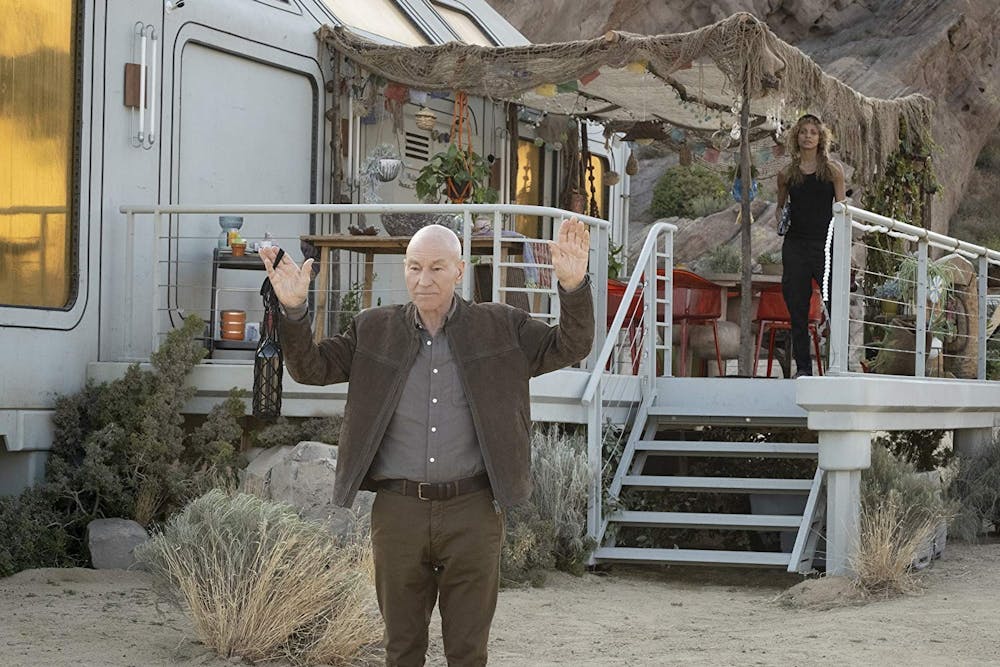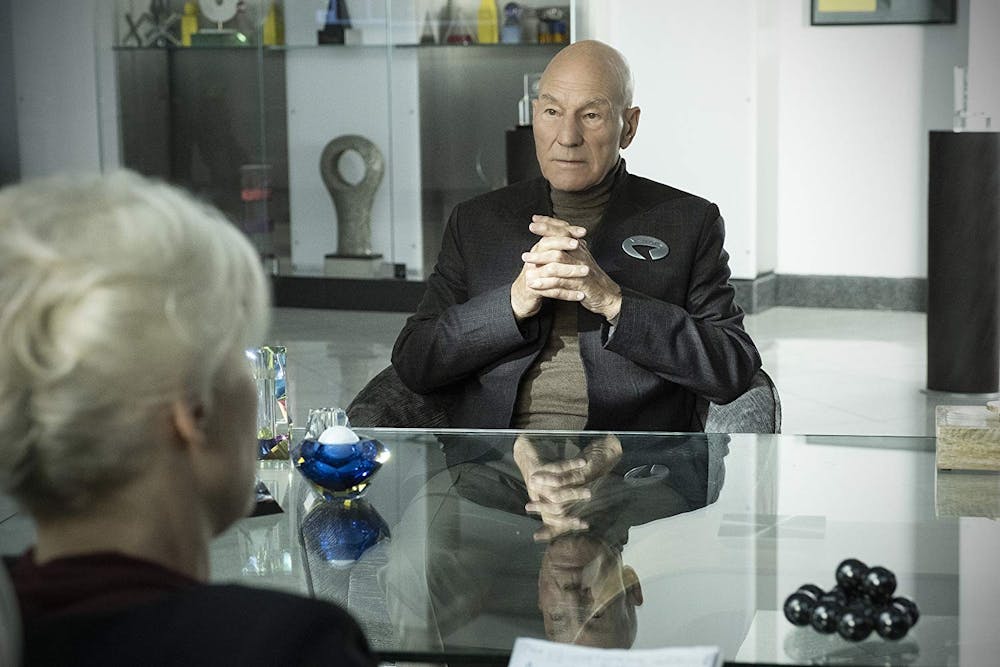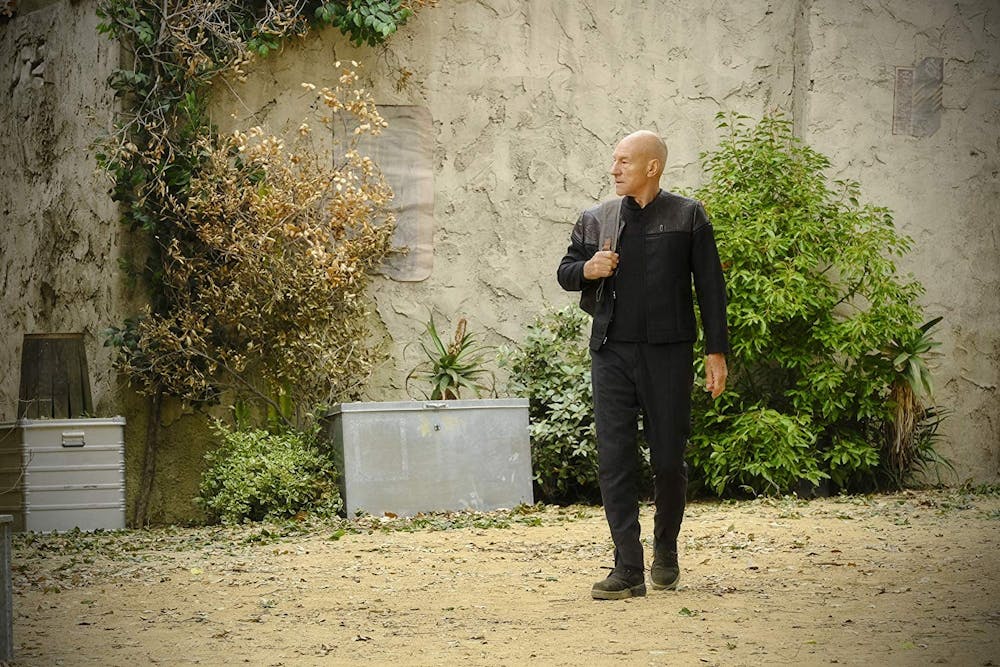Star Trek: Picard is an addictive show that stands on its own, despite having roots in previous Star Trek media. It may be less emotional or nostalgic for viewers who are unfamiliar with the other installments of the franchise, but it’s still an independently interesting science fiction mystery. The show clarifies itself as it goes along, setting up the stakes for those with no background in the greater Star Trek universe.
The pilot of Star Trek: Picard starts with protagonist Jean-Luc Picard and Commander Data (who were previously main characters of Star Trek: The Next Generation) piloting through space, enjoying a game of cards. The universe outside is stunning, reminding the viewer how much better the special effects will be for this modern sequel.
The idyllic scene ends up being Picard’s dream, and it sets the tone for the show—this is not a nostalgic appreciation of what Star Trek was. Instead, it's an exploration of the damaged remains of one of the franchise’s heroes. Picard describes his own dream by remarking, “The dreams are lovely. It’s the waking up I’m beginning to resent.” It’s a dark line, but perhaps one that resonates with its audience, yearning for the simpler time of Star Trek: The Next Generation, which aired from 1987 to 1994.

Patrick Stewart and Michelle Hurd in Star Trek: Picard
Set during Jean-Luc Picard’s retirement, the pilot delivers exposition through an interview with Picard, summarizing important events from Star Trek: Nemesis and the 2009 film Star Trek. When the planet Romulus is threatened by a supernova, Picard convinces the Federation to help, despite Romulans and the Federation being longtime enemies. When the Federation rescinds their help, the Romulans suffer, and Picard quits Starfleet. It’s devastating for fans of Picard. Picard angrily berates the frivolous interviewer and compares the incident to Dunkirk, bringing the lofty space opera back to a more grounded history.
Eventually, another Synthetic, an android like Data, comes to Picard for help, having been attacked by mysterious figures at her home. She doesn't know that she is a Synthetic at all; she is made of flesh and blood. And thus the mystery begins, with Picard discovering a link between her and Data. It’s not exactly unique to tell stories of droids or robots through the lens of real–life prejudice, but it cements Star Trek: Picard as a modern show seeking to explore the nuances of moral quandaries.
In the second episode, Picard has a heated fight with Admiral Kirsten Clancy of Starfleet, arguing that it wasn't up to the Federation to decide if an entire species “lives or dies.”
“Yes we do. We absolutely do!” Clancy counters vehemently. “Thousands of other species depend upon us for unity, for cohesion. We had to make choices.”

Ann Magnuson and Patrick Stewart in Star Trek: Picard
It’s a frighteningly realistic and uncomfortable argument, one we confront frequently in today’s increasingly isolationist time, where an “us or them” mentality keeps rearing its ugly head. In older Star Trek series, Starfleet is a side effect of utopia, a force for exploration bridging cultural divides across the universe. Unfortunately, that’s a storyline that will no longer resonate with modern audiences.
Star Trek: Picard leans into a small–scope, serialized form of storytelling, grittier than other series in the franchise. It focuses on one character’s mission, comparable to the popular show The Mandalorian, another small–scale revisitation to a major science fiction franchise. The Mandalorian is damaged and not nearly as powerful or influential as the Skywalker family, yet he's beloved by fans. Jean-Luc Picard is not a perfect man. He has hidden away from his demons for decades, “waiting to die.” Starfleet is no longer a wholly morally organization. But, in the second episode, Picard realizes he must rejoin Starfleet to solve the mystery and undermine a sinister and dangerous plot. Both he and Starfleet become, ultimately, forces for good.

Patrick Stewart in Star Trek: Picard
When Picard puts the Starfleet emblem back on his chest, it's a poignant and affecting moment. It is a silent and powerful decision to incite positive change from the inside, to solve a mystery, to cherish the memory of a beloved friend, and to make the most of one’s dwindling life.

